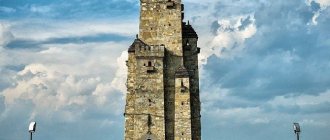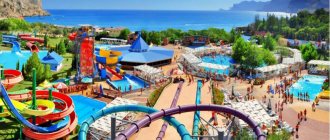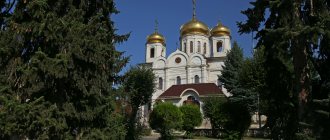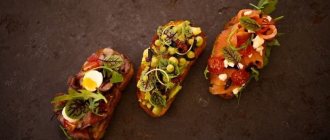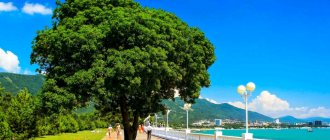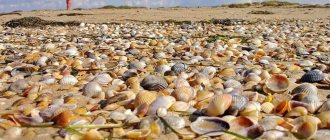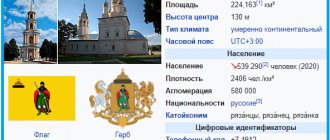Geography and climate
Sudak is located in the southeast of the Crimean Peninsula on the shore of the Black Sea bay of the same name. The city is located 76 km from Yalta and 48 km from Alushta. A ridge of low mountains stretches from the north, and from the east the Kapsel Valley and Cape Alchak approach.
Sudak has an arid Mediterranean climate, which is characterized by an abundance of sunny days. But at the same time, the city’s climate is somewhat colder than other Crimean resorts, which is especially felt in winter. Winter in Sudak can be quite cool, although severe frosts are rare.
Zander
Accommodation
Hotels
The hotels here are mostly three- to four-star, but the majority of the resort's hotel business is still occupied by the niche of so-called budget hotels - private mini-hotels and guest houses. Vacationers speak well of the hotels “Surozh”, “Grand”, “Sparrow’s Nest”, “Astarta”, and guests also leave good reviews of the private hotels “Aquamarine”, “Navigator”, “Shelen”, etc. The cost of living will depend on various factors, including, for example, the location in relation to the sea - living approximately 20 minutes walk from the sea will cost you from 19 USD. per person.
Sanatoriums
- Cost – from $36 per person.
Many people prefer to combine a beach holiday in Sudak with spa treatment. The most comfortable way to improve your health is in sanatoriums. Local sanatoriums are focused mainly on the treatment of the peripheral nervous system, musculoskeletal system, digestive organs, endocrine system, skin diseases, and diseases of the circulatory system. Treatment, in particular, is carried out using sulfate-bicarbonate mineral water (its source is located right in the city); Medical procedures also include mud therapy, herbal medicine, hydromassage, inhalation, etc.
A serious medical base is presented in the Zvezdny boarding house (unique location, developed infrastructure, convenient location), the Air Force sanatorium, one of the best health institutions in Crimea is the Sudak tourist and health complex.
Private sector
- Cost – from $16 per person.
If you prefer to be your own boss, not to depend on the hotel regime or other vacationers, then you are better off renting housing in the private sector. In Sudak you can find many interesting options for such housing, including both a separate house in the city center and a three-room apartment with all amenities.
Story
Sudak is one of the oldest cities in Crimea. It was founded in 212 as a settlement of the Bosporan kingdom called Sugdeya. In the 7th century, the Byzantines settled here, built a port and founded a bishopric. At the beginning of the 13th century, Sudak became part of the Trebizond Empire, and a few decades later it was ravaged by the Seljuks.
In the second half of the 13th century, Venice tried to control the city, but during the first half of the 14th century it was ravaged by the Horde several times. Subsequently, Sudak was part of the Crimean ulus, which was controlled by the Golden Horde.
Panorama of the Genoese fortress
In 1365, Sudak was captured by Genoa. The Genoese ruled the city for 110 years. They restored and improved the ancient fortress, which is now the hallmark of the city, and built temples, wells and even a water supply system. In 1465, Sudak was conquered by the Ottoman Empire, within which it remained for more than two centuries and fell into decay.
In 1783, Sudak, like the whole of Crimea, became part of the Russian Empire. In the 18th century, the city practically ceased to exist and only a few dozen inhabitants lived here. Sudak began to develop again in the 19th century as a wine-making center. The status of a city was returned to it only in 1982.
Population of the urban district of Sudak and occupation of local residents
As of 01/01/2019, the population of the city of Sudak was 16.8 thousand people - this is 51.1% of the total population of the district, and in each of the rural settlements of the Sudak City Council there lives, on average, from 0.5 thousand. up to 2.5 thousand people. As a result of the population census conducted in 2014, it turned out that the ethnic composition of those permanently living in the district is about 65% Russians, 17% Crimean Tatars, 13% Ukrainians and 5% Tatars of Russian origin, Poles, Belarusians, Azerbaijanis, Armenians, Uzbeks and representatives of other nationalities.
The national composition of the population of the city of Sudak in Crimea and the developed tourism in the district dictate the presence of two special educational institutions - this is a secondary school with instruction in the Crimean Tatar language and a branch of the State Budgetary Educational Institution of the Republic of Kazakhstan "Romanov College of Hospitality Industry".
The places here are traditionally resort and wine-growing, so the indigenous population is mainly engaged in serving tourists, and also works in the production of champagne and vintage wines.
There are a number of enterprises operating on the peninsula that produce essential oil products - aromatic oils and essences. One of them is located in the city of Sudak: back in the late 20s of the 20th century, Bulgarian varieties of roses were brought to Crimea specifically for these purposes, in addition, they began to cultivate lavender, coriander, lemon wormwood, mint, clary sage, fennel and other essential plants . Rose oil produced in Sudak during the USSR was of such high quality that the remnants of the reserves of those years, preserved to this day, have not yet lost their properties. When the Soviet Union collapsed, the essential oil industry in Crimea went into virtual decline, but with the annexation of the peninsula to Russia, production began to revive. Today, cosmetic products based on natural essential oils from the NPF “Kingdom of Aromas”, whose production base is located in the city of Sudak - where a rose plantation is located at the foot of the highest of the surrounding forested mountains, Perchem, are in good demand. The enterprise plays an important role in providing the population with jobs.
How to get there
The nearest international airport and railway station are located in Simferopol. Buses and minibuses run from the capital of Crimea to Sudak. Anapa airport is also relatively close. A little further (about 385 km) is the larger Krasnodar International Airport. You can get from the Kuban capital to Sudak by bus.
Zander
Attractions
Genoese fortress
Genoese fortress is the main attraction of Sudak, which is considered one of the symbols of Crimea. This powerful citadel was built in the late Middle Ages (14-15 centuries) by the Genoese and is perfectly preserved. Here you can see powerful battlements, barracks, twelve towers and several temples.
Fortress walls
The Sudak fortress begins at the foot of the Fortress Mountain (or in Tatar Dzhenevez-Kaya) and rises to its top. It is protected on all sides by natural barriers and is accessible only from the north. The fortress actually consisted of two parts: the outer perimeter of the walls with gates and a barbican, where the Lower City was located, as well as the citadel itself with the consul's castle and a watchtower at the very top. Outside the gates of the outer walls were the port suburbs.
The Consular Castle is the most important and well-preserved part of the Genoese fortress, located in the eastern part of the citadel. It is a separate fortification, consisting of a residential tower, called a donjon, and two other towers, which are connected by a fortress wall. On the lower tier of the donjon there was a cistern and weapons storage. On the second floor there is a room with a fireplace. The consul lived on the third floor. The castle has a small courtyard, which is limited from the north by a corner tower. In its southwestern part there is a hidden door, from which the descent to the sea begins.
Intercession Church
The Church of the Intercession was built at the beginning of the 19th century and has some features of Moorish architecture. In the first decades of Soviet power, the church was closed and the bell tower was dismantled. The bell tower and services in the temple were restored in the 90s of the 20th century.
New World
Novy Svet is a small village 5 km from Sudak, located in a beautiful bay. Its main attractions are
- The Golitsyn Trail is a picturesque path along the sea that leads to an ancient grotto, where there used to be a cave temple, and then elite princely wines were stored. Golitsyn even equipped a concert hall in it, in which, they say, Fyodor Chaliapin himself sang.
- The sparkling wine factory was founded in 1878 by Prince Lev Golitsyn. Sparkling wine at receptions and ceremonies of the Russian Emperor Nicholas II.
- Relict juniper grove
Church of the Twelve Apostles
The Church of the Twelve Apostles is a small medieval temple on the territory of the Genoese fortress, probably built in the 13th-15th centuries for the Greek community. Previously it was famous for its large fresco depicting the Last Supper. Unfortunately, the fresco was lost during World War II. Although over the course of many centuries the church was destroyed and damaged several times.
Temple of the Apostle Matthew
The Temple of the Apostle Matthew is a medieval building on the territory of the Genoese fortress with an interesting history. It is believed that this building was built by the Seljuks in the 13th century. Then the Greeks equipped it as an Orthodox church, and the Genoese - as a Catholic one. After Crimea was included in the Russian Empire, an Orthodox Church was established here. Nowadays there is a museum here.
Megan
Meganom is the largest cape of Crimea, the coastline of which is more than 15 km long. Meganom is translated from Greek as “large, spacious”. It is famous for its picturesque bay with clear sea, terraces, rocks and is a natural monument.
Blue Bay
Blue Bay is a secluded bay near Cape Kapchik (New World), which is famous for its clear sea with blue water and picturesque nature.
Other interesting places in Sudak:
- Alchak-Kaya is a natural reserve with picturesque rocks and clear sea.
- Mount Falcon is a small picturesque peak that was part of a coral reef millions of years ago.
- Aquapark.
- Cave monastery founded in the 8th century by monks from Chersonesos.
Where can you eat in Sudak?
The traditional menu in cafes and restaurants in Sudak is resort cuisine. All this means that visitors will most likely be offered kebabs or fish dishes. There are also more conceptual establishments here. The unique Fortecia restaurant invites guests to taste the masterpieces of Turkish cuisine in a chic setting with gilded elements and luxurious carpets.
Sudak also has its own peculiarity regarding food establishments - here canteens are coming back into fashion. Of course, places like “Home-style Dining” have nothing in common with Soviet public catering establishments - this is a completely new format, offering beautiful and high-quality dishes of almost restaurant level at an affordable price. Judging by the reviews, this concept of folk canteens was to the taste of both guests and residents of the city.

